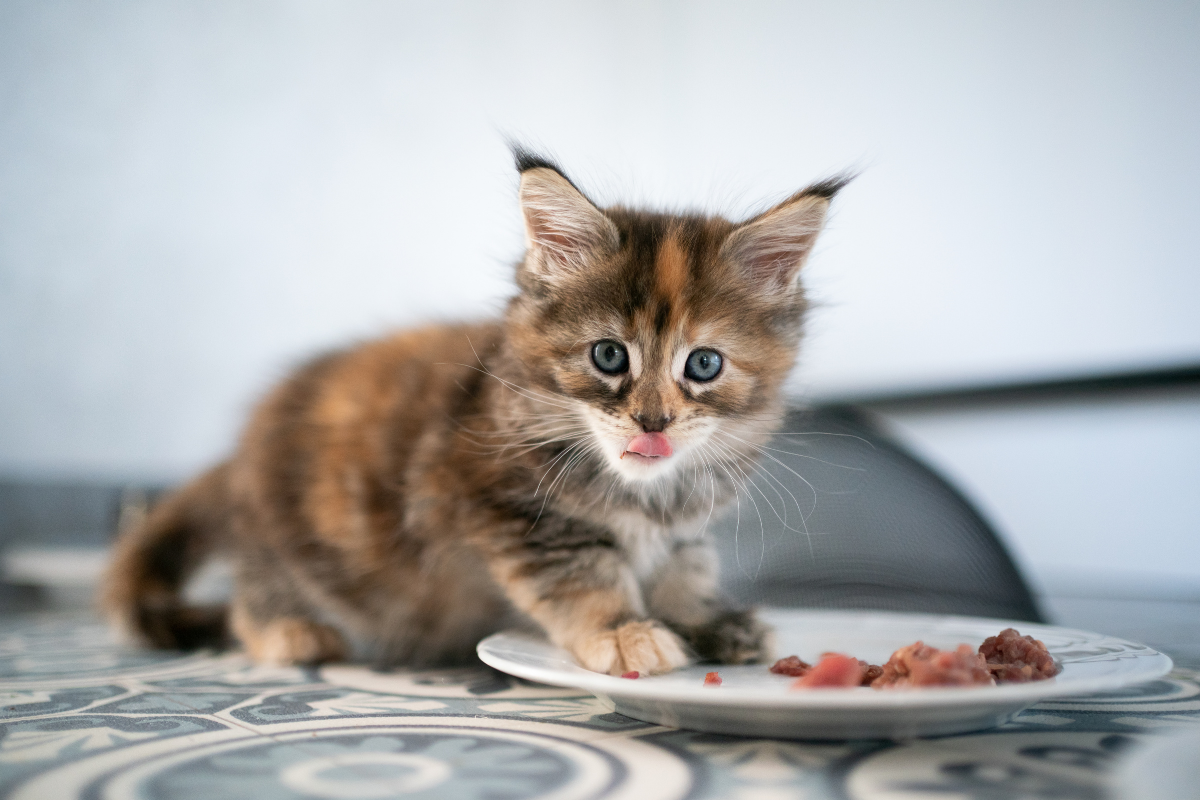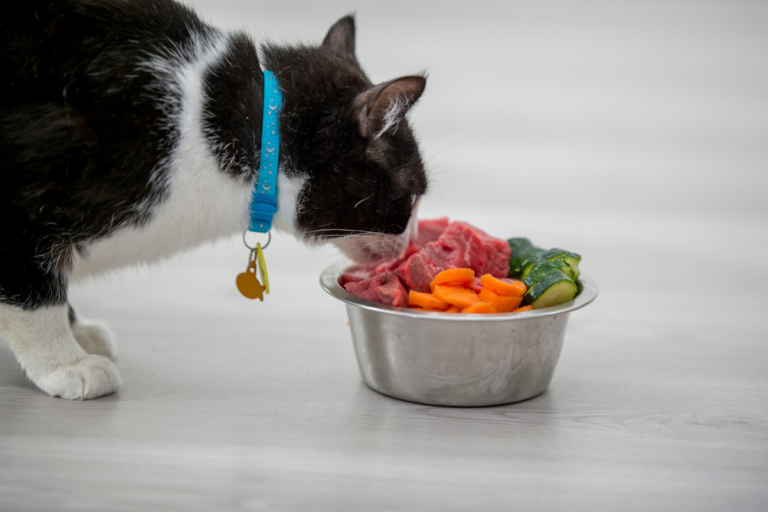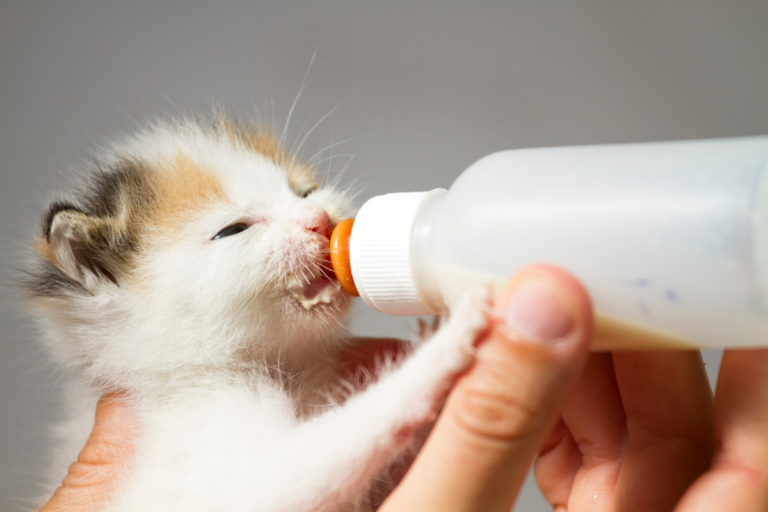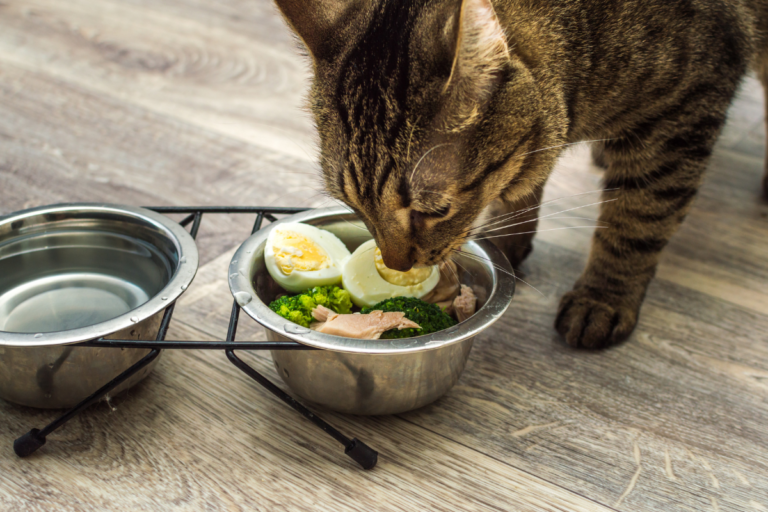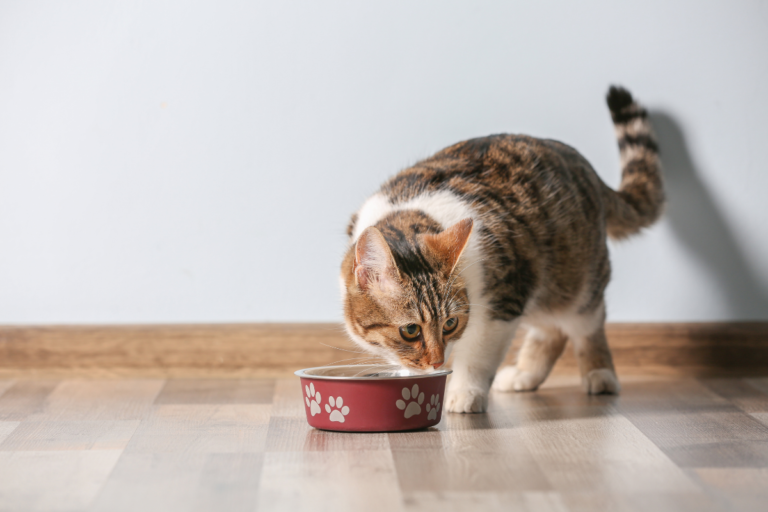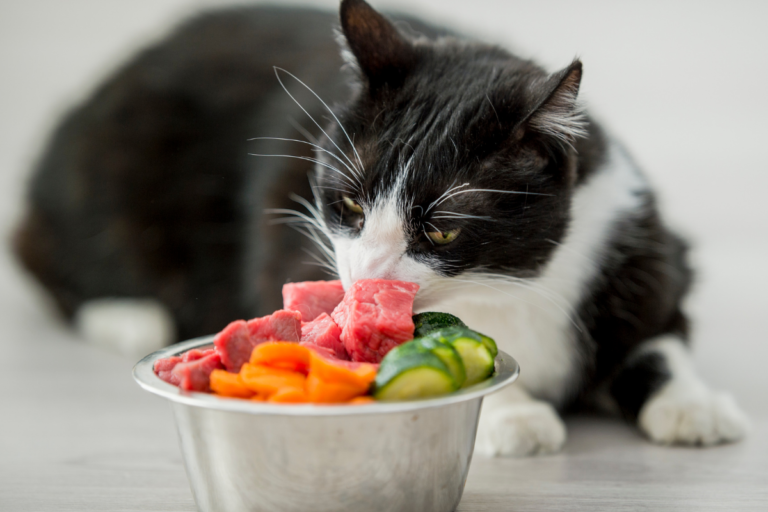Purrfection Unleashed: The Best Kitten Diet Plan for Your Feline
Understanding Kitten Nutrition
Essential Nutrients for Kittens
Being a cat parent has taught me just how crucial it is to feed my little furball the right stuff. Kittens aren’t just tiny cats; they’ve got unique needs while they’re growing up. Here’s what you gotta include in your kitten’s meal plan:
- Protein: Think of it as the building blocks for your kitten’s muscles. Animal-based goodies like chicken and fish are top-notch because they pack all those amino acid goodies.
- Fats: This is where the high-energy kick comes in! They’re also awesome for a shiny coat and that cute little brain of theirs. Omega-3s and Omega-6s are the secret sauce here.
- Carbohydrates: Sure, they ain’t life or death for our feline friends, but they do fuel the zoomies. Grab high-quality stuff like grains and veggies. Learn more about cats and carbohydrates.
- Vitamins: Don’t skimp on the A, D, E, and those B-biggies. They keep everything running smoothly, from peepers to bones and energy levels.
- Minerals: Calcium and phosphorus have got your kitten’s back, literally—bones and muscles need ’em.
- Water: Hydration is key. Make sure there’s always fresh H2O on tap for your kitty.
Quick glance at kitten dietary must-haves:
| Nutrient | Why It’s Needed | Where to Find It |
|---|---|---|
| Protein | Muscles that’ll make a bodybuilder jealous | Chicken, fish, meat |
| Fat | Energy bursts and silky fur | Fish oil, chicken fat, flaxseed |
| Carbohydrates | Extra energy for those playful jumps | Whole grains, vegetables |
| Vitamins | Sharp vision and strong bones | Liver, fish oil, veggies |
| Minerals | Solid bones and active muscles | Meat, bones, supplements |
Want to know more about how kitty’s needs change as they grow? Check out cat nutrition requirements.
Toxic Foods for Cats
Feeding time isn’t just about the good stuff; it’s also about dodging the baddies. Some foods spell trouble or worse for our feline friends. Watch out for these no-go grub items:
- Onions and Garlic: These nasties can trash red blood cells, leading to anemia. Signs are tiredness, weakness, hunger strikes, and creepy red pee. Race them to the vet if they’re snacked on any.
- Raw Eggs and Raw Meat: Yikes! Think salmonella or E. coli. You’d notice barfing, diarrhea, and your kitty feeling all blah.
- Chocolate: What’s sweet for us ain’t sweet for them. It has stuff causing the vomit express, shakes, and the not-so-happy dance (Hill’s Pet Nutrition).
- Alcohol: Keep the drinks way out of paw reach. It leads to throw-ups, spinning heads, and is downright lethal. Even raw dough’s a no-go.
- Grapes and Raisins: Kidney crash alert! Vomiting and sleepiness mean danger. Store ’em high up and away.
Keeping this no-eat list in mind helps look after my kitten’s nine lives. For more tips on what’s safe and what’s not, check out cat diet requirements. When in doubt, your vet’s got the scoop on what your little one should devour—or dodge.
Feeding Your Growing Kitten
Making sure your little furball gets the right chow is super important for their growth and happiness. Let’s chat about when to feed ’em, how to switch up their grub, and which kitty foods are all the rage.
Feeding Schedule for Kittens
The first few weeks are a wild ride for your kitten—lots of bounce and energy, which means they need a pretty packed lunch schedule. These little fluffballs might double or even triple their weight, so aim for three to four meals a day to keep them bouncing around. Here’s a quick rundown:
| Kitten Age | How Often They Eat |
|---|---|
| 0-4 weeks | Every few hours with kitten milk |
| 4-6 weeks | Trying out solid food, 3-4 times daily |
| 7-8 weeks | Mostly solid meals, still 3-4 times daily |
| 8 weeks+ | 2-4 times a day |
If mom’s milk isn’t in the mix, you’ll need to step up with frequent feeds. A vet can guide you on knitting together the perfect meal plan (Purina).
Transitioning Your Kitten’s Diet
When it’s time for a menu change, take it slow. No one likes an upset tummy! Follow this simple game plan:
- Start with a mix of old and new chow in the same bowl.
- Slowly shift the balance—less old, more new.
- Spread it out over four to seven days.
This way, your kitten won’t be left wondering, “What’s up with dinner?” They’ll be cool with the new eats.
Kitten Food Recommendations
Picking the right food helps your whiskered pal grow strong and sturdy. Here’s a bite-sized guide based on age:
-
Newborn to 8 weeks: The young explorers start nibbling on solids at around 5-6 weeks and fully dive into them by 7-8 weeks. A mix of wet and dry treats will do wonders (PetMD).
-
8 weeks and beyond: They may still need soft, canned fare since crunching on dry stuff is tricky for their little teeth. All wet diet means four meals a day, but if there’s dry food in their diet, two canned meals work fine (WebMD).
Curious about the nitty-gritty of cat nutrition? Check out our articles on cat diet requirements and cat nutrition requirements.
Got a comment? A tip? Share your go-to kitten food brands and tricks for the perfect kitten meal plan.
Kitten Diet Guidelines
Feeding your little furball right can make all the difference for their health and happiness. Let’s dive into the essentials of a kitten’s diet: from protein and calcium needs to energy requirements and portion control. I’ve got the scoop on how to help that floppy-eared bundle grow big and strong.
Protein and Calcium Requirements
Kittens need a diet packed with goodies like protein and calcium to turn into the majestic cats they’re destined to be. Protein builds muscle and handles important stuff like energy, while calcium keeps those bones and teeth sturdy.
| Nutrient | Pawsome Daily Needs |
|---|---|
| Protein | About 30% of total nibbles |
| Calcium | Between 0.8% – 1.6% of munchingle |
Experts suggest sticking to kitten chow until they’re about a year old. It’s got the primo blend of protein, amino acids, minerals, and vitamins (thank you WebMD, for the lowdown). Calcium makes those bones sturdy, while DHA is like brain food that powers up their little noggins and peepers (Purina).
Energy Needs and Portion Control
Kittens are like tiny, fluffy little rockets, needing loads of energy to fuel their kitty adventures. In their first weeks, these furballs might double or even triple in size, needing an energy boost way higher than their grownup cat pals.
| Age | Chow Times a Day |
|---|---|
| Up to 6 months | 3-4 meals |
| 6-12 months | 2-3 meals |
Feed them three to four square meals a day to keep up with their high-energy mischief (WebMD). Watch those portions to dodge the chubby kitty blues, and steer clear of autofeeding to keep them fit and fine (VCA Hospitals). This way, they’ll get all the good stuff without overloading on the munchies.
Optimal Growth and Development
For top-notch kitty growth, load up on protein, calcium, and DHA. These buddies help build those muscles, maintain tough teeth, and fuel their brains for maximum cuteness and curiosity.
| Nutrient | What It Does |
|---|---|
| Protein | Builds muscles and fuels them |
| Calcium | Keeps those bones and chompers strong |
| DHA | Powers brains and improves sight |
Choose kitten foods loaded with the good stuff to help them grow from first nibble to tail flick. As they morph from kittens into regal cats, tweak their diet to ensure they’re still getting the perfect nutrient punch.
By following these pointers and keeping a watchful eye on their size and health, you’ll set them on a purring path to awesomeness. Check out more tips on monitoring your kitten’s growth and how regular weigh-ins help track their progress.
Practical Tips for Feeding Kittens
Feeding your little furball shouldn’t feel like rocket science, but it can get tricky when you wanna strike a balance between giving them the nutrition they need and keeping them away from the no-go snacks. Here’s your cheat sheet for keeping your kitten’s tummy happy and healthy.
Treats and Table Scraps
Treats can be a great way to pamper your kitten, but they need to be given with a bit of restraint. Try to ensure treats stay under 10% of their daily chow (WebMD).
| Type of Treat | Safe Portion |
|---|---|
| Store-Bought Cat Treats | Under 10% of daily intake |
| Mommy’s Leftovers | Just don’t |
Watch out for sharing your dinner with your kitty because some of it can actually be toxic. Things like onions, garlic, chocolate, coffee, tea, raisins, and grapes are on the naughty list. Even cheese and milk, though tempting, could mess up their tiny tummies due to lactose intolerance.
Canned Food for Young Kittens
Canned food can be a lifesaver for kittens with chew-and-digest challenges. Just make sure you grab the ones specifically for kittens, as they pack the right punches in terms of nutrients needed for their tiny bodies. Don’t miss our guide on kitten milk supplement for more tips.
| Essential Nutrients | Canned Food |
|---|---|
| Protein | Lots |
| Fat | Balanced |
| Calcium | Just right |
Avoiding Toxic Foods
One golden rule in kitty cuisine is steering clear of foods that spell trouble. Here’s what to keep out of their reach:
- Onions and Garlic: Can mess with their stomachs and hurt their red blood cells.
- Chocolate, Coffee, and Tea: Not just human treats; they’re dangerous to cats.
- Raisins and Grapes: Seriously bad news for kidneys.
- Dairy Products: Many kittens react poorly, ending with upset bellies.
To get more details on keeping harmful foods at bay, check our guide on Avoiding Toxic Foods.
Follow these straightforward tips, and you’ll be all set in giving your kitten the best start. Keep this handy guide bookmarked as you watch your little one grow!
Monitoring Kitten Growth
Keeping an eye on how your little furball grows is like making sure they’re on the road to becoming a mighty, agile cat. Let’s chat about some key things to watch for as your kitten blossoms, like moving to big-kid food, doing regular weigh-ins, and dodging those sneaky weight gains.
Weaning and Solid Foods
Weaning is like a big step in your kitten’s life. Picture this: around three to four weeks old, your kitten might catch the food smell (thanks, Purina), and it’s the cue to slowly start mixing in some soggy kibble or wet chow. A little guide I live by goes like this:
| Age (weeks) | Food Type | Frequency |
|---|---|---|
| 0-4 | Mama’s milk or kitten formula | Every 2-3 hours |
| 4-6 | The soggy crumbly stuff alongside formula | 4-6 times daily |
| 7-8 | Mostly chewy solids | 3-4 times daily |
Shift ’em from milk to munchies gently to dodge any tummy troubles. Can’t find mamma’s milk? No worries, grab some kitten milk supplement.
Importance of Regular Weigh-ins
Those tiny whiskers deserve careful tracking—weekly weigh-ins can catch stuff early. I’m talking weekly checks, like a weight detective. Check this out:
| Age (weeks) | Average Weight (oz) |
|---|---|
| 1 | 4-6 |
| 2 | 6-12 |
| 3 | 12-16 |
| 4 | 16-24 |
Write down their heft and holla at your vet if things look fishy. Normal weight gain? About 10-15 grams a day, easy. And don’t forget, it’s not just about the scale—feel their bod; are they too skinny or packing the pounds?
Preventing Obesity in Kittens
Keeping your kitten from looking like a furry balloon is a win for their future. Giving them too much chow or letting them graze all day can beef them up too fast. Smaller, balanced bits throughout the day are purrfect according to VCA Hospitals.
A few tips to stick to:
- Dole out 3-4 snack-sized meals daily versus a buffet-style approach.
- Manage those portions to own their calorie game.
- Opt for chow high in goodies like protein, fat, and calcium for a growth spurt.
- Skip the carb-heavy stuff.
- Check their weight and body style routinely, and get your vet’s wisdom for a bespoke diet plan.
Following these simple tricks, your kitten will grow up fit and fabulous without battling the bulge. If you’re looking for more tips on what to toss in their food dish, swing by our piece on cat diet requirements.
Catering to Kitten Preferences
Inheriting Food Preferences
When I’m planning a kitten’s diet, I’ve noticed they often get their food likes and dislikes from their momma cat. What the mother eats during pregnancy and while nursing can shape what the kittens will munch on later. So, if mama cat’s a fan of certain flavors and textures, chances are her kittens are too. But don’t worry, as they get older and try new stuff, their tastes can evolve a bit (AAHA).
Creating a Safe Feeding Environment
To help my kittens eat happily, I make sure they’ve got a chill spot to dine in. It’s like setting up a five-star restaurant for them—no loud noises or any crazy commotion around. This zen area lets them focus on chow time without freaking out. I also keep the munching zone far away from their litter box—nobody likes a side of litter with their dinner.
For these little furballs, I use shallow dishes that make eating easy. A gigantic bowl kinda freaks them out, like their dinner’s gonna swallow them back. With a comfy spot, they can chow down and enjoy mealtime.
Choosing the Right Kitten Food
Picking the right food is super important for your kitten’s growth spurt. When I’m shopping for kitten chow, I’m on the lookout for food that’s a gold medalist in the nutrition Olympics, specifically made for little cats. I’m talking about the right doses of proteins, fats, omega-3s for those wide eyes and sharp brains, and a splash of vitamins E and C for kick-butt immunity (PetMD).
Since their chompers are still tiny, dry food can be a tough nut to crack for kittens. That’s why I start them off with canned food, so their bellies get the love and nutrition they need. If I’m mixing dry and canned foods, the game plan is two canned meals a day. But if canned food’s all they eat, bump it up to four times a day.
Here’s a simple guide for feeding routines:
| Type of Food | How Often To Serve It |
|---|---|
| Dry and Canned Food | Two Canned Meals Daily |
| Canned Only | Four Times a Day |
Finding the right mix that hits their nutritional sweet spots and inherited tastes keeps them thriving and purring. If you want to dive into more about what kittens need, our article about cat diet requirements is the way to go.
Discovering the best food is sometimes like dating—trial and error! Keep tabs on what they like and stick to a balanced menu for a happy, healthy kitten. If you’re hunting for more feeding pointers, swing by our resources on kitten milk supplement and cat nutrition requirements for more handy tips.
